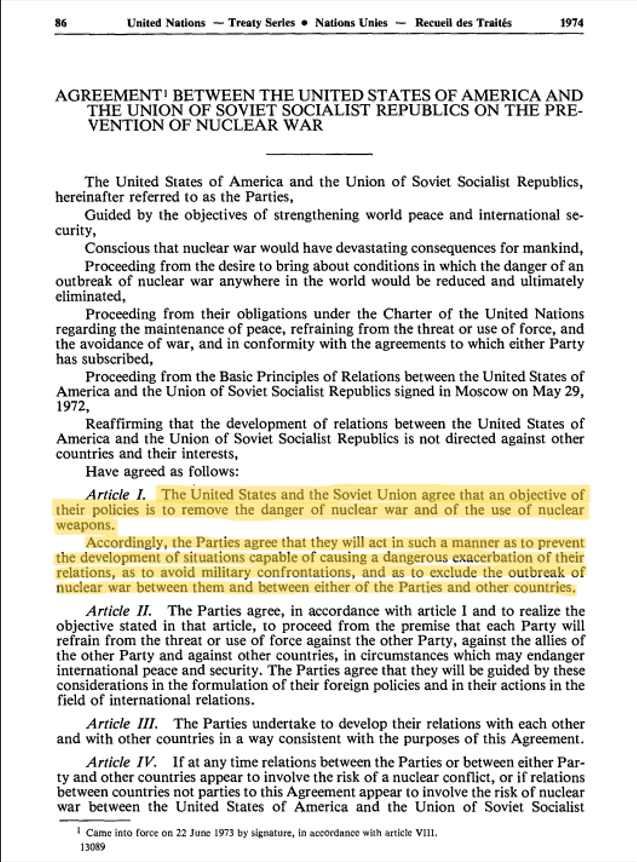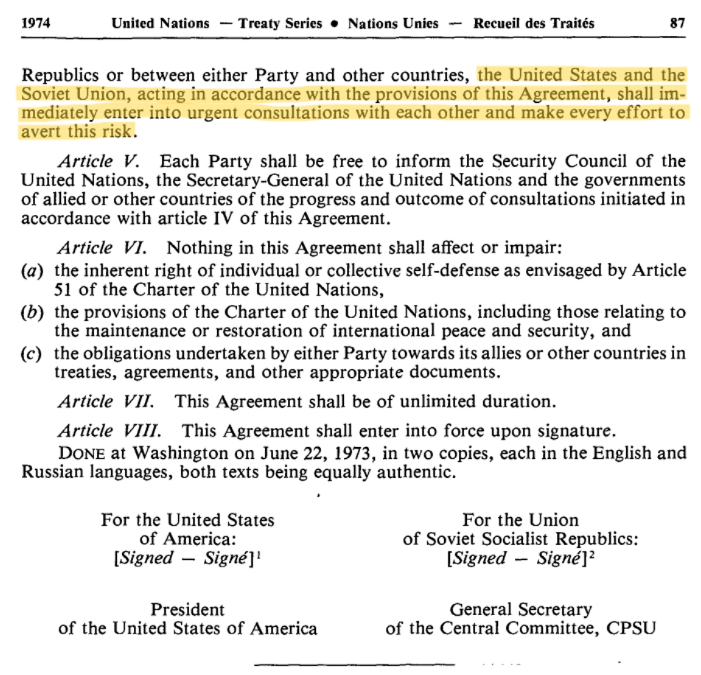Richard Nixon’s Visit to China: The Turning Point in Sino-American Relations that Forever Reshaped the Geopolitical Landscape of the World
Soviet Detente
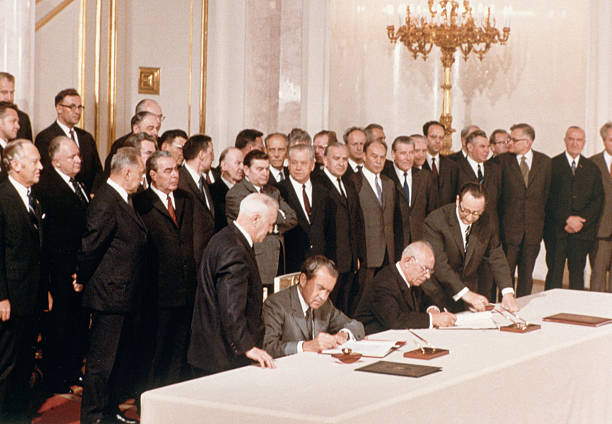
"President Nixon signing the first SALT treaty with other Soviet officials." CORBIS/Corbis via Getty Images
“In literally every region of the world the Chinese see the Soviet hand at play. As you will see in the area discussions below, Mao and Chou urged us to counter the Russians everywhere—to work closely with our allies in Europe and Japan, and to take more positive action to prevent the Soviets filling vacuums or spreading their influence in areas like the Middle East, Persian Gulf, Near East, South Asia and Indian Ocean.”
-Kissinger reflecting on discussion topics in his Memorandum, 1973
Observing U.S-China negotiations, Soviet leader, Leonid Brezhnev, opened up to Strategic Arms Limitations Talks. This came from an accumilation of pressure from the Sino-American rapproachment, and fear of Nuclear annihilation.
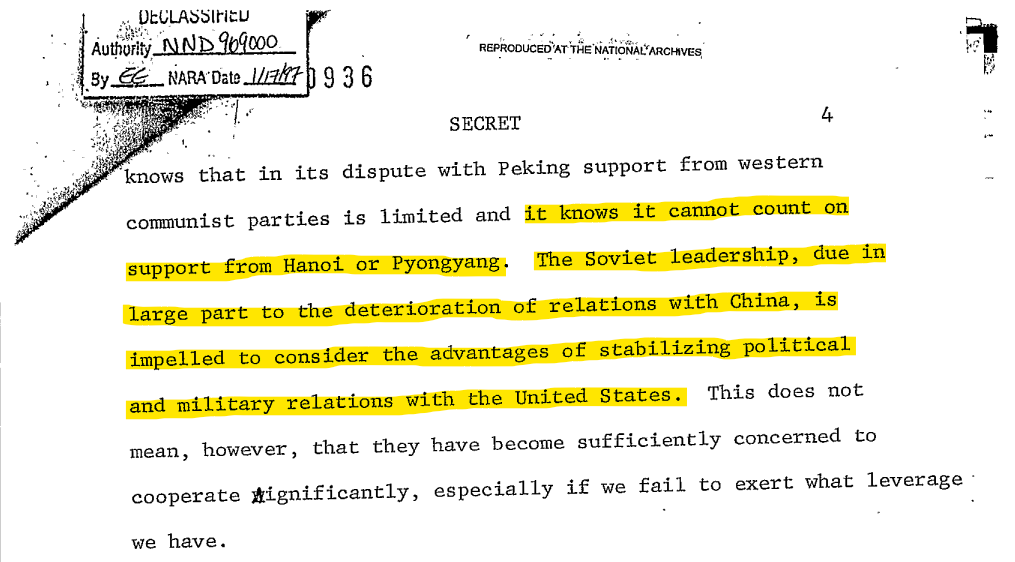
"U.S. State Department, Bureau of East Asian and Pacific Affairs, Office of Asian Communist Affairs, "Implications of Sino-Soviet Developments: Meeting of June 21," 23 June 1969, Secret" National Archives, SN 67-69, Pol 32-1 Chicom-USSR
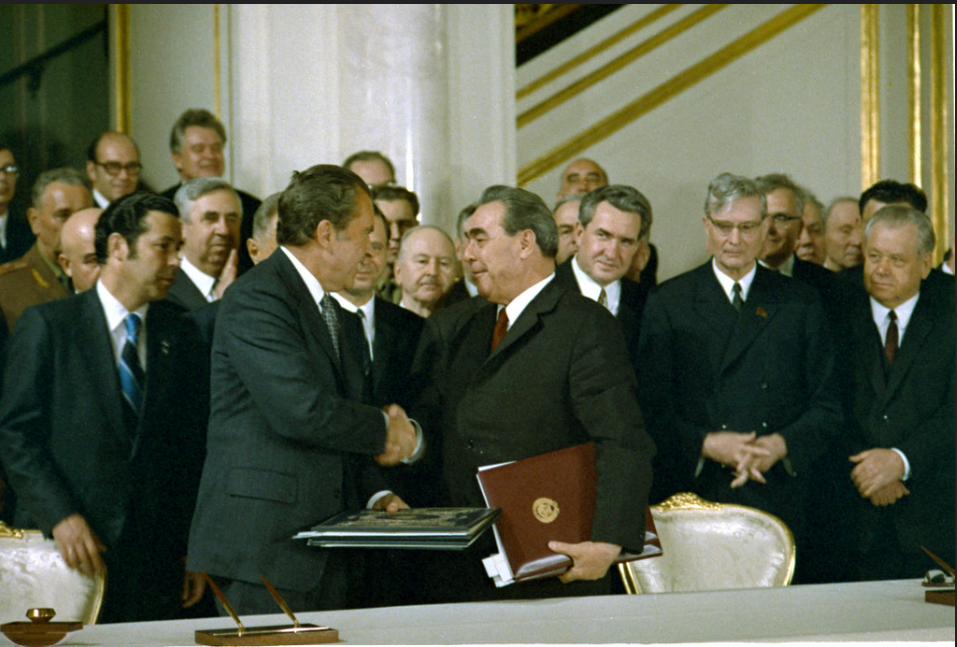
"President Nixon and Soviet Premier Brezhnev shake hands after signing the first SALT treaty." CORBIS/Corbis via Getty Images
“What emerged as the diplomacy unfolded was that we were in the favorable so-called ‘swing position,’ where the Soviets and the Chinese started, if you like, competing for good relations with us.”
-Ambassador Richard Solomon, Assistant Secretary of State for East Asian and Pacific Affairs
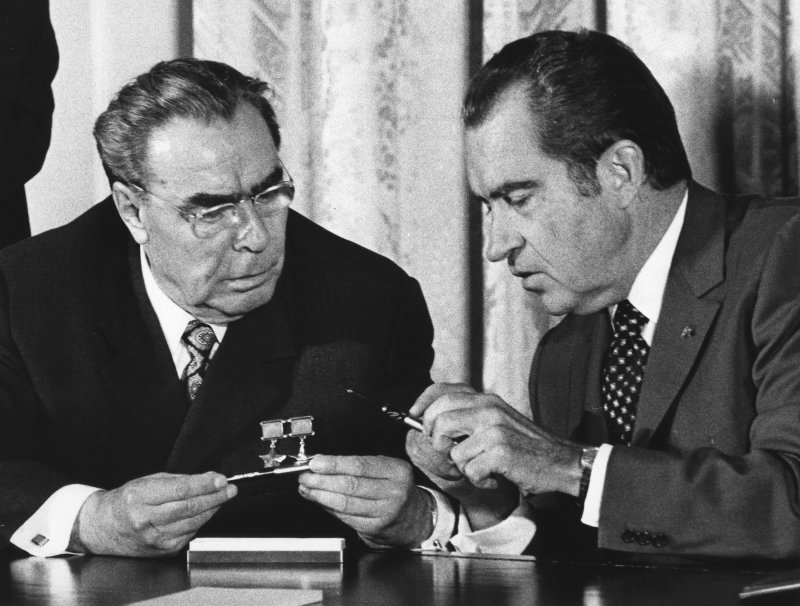
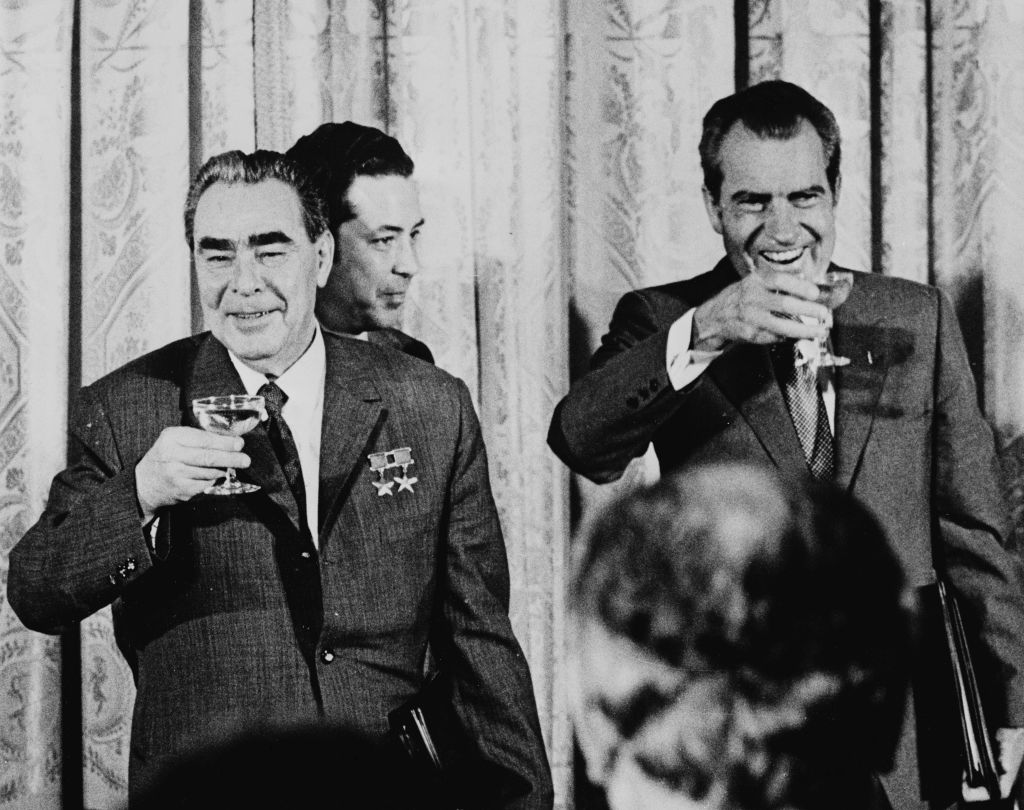
Frank Cancellare/UPI
Hulton Archive/Getty Images
In May 1972, President Nixon visited the USSR for SALT Agreement discussions. This dialogue led to the first major nuclear arms control treaty.
“I felt that the relationship between the United States and the Soviet Union would probably be the single most important factor in determining whether the world would live at peace during and after my administration”
-Richard Nixon in "Memoirs of Richard Nixon"
Leonid Brezhnev later traveled to Washington to discuss the Prevention of Nuclear War Agreements. This establishment of communications increased trade and possibilities for future negotiations.
"Agreement Between The United States Of America And The Union Of Soviet Socialist Republic On The Prevention of Nuclear War"
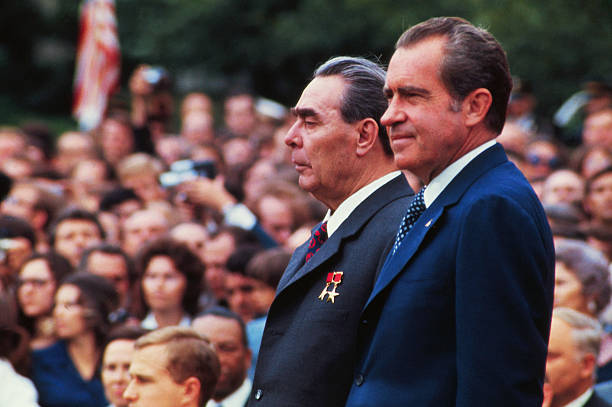
"Washington, DC. President Richard Nixon and visiting Soviet leader Leonid Brezhnev appear on platform during the official welcoming ceremonies on the White House lawn." Getty Images
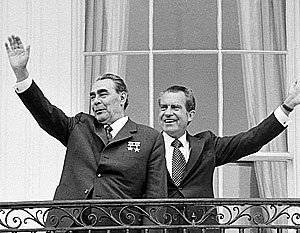
"Russian leader Leonid Brezhnev (left) and US President Richard Nixon wave from the balcony of the White House in Washington, DC, during their week of talks, June 1973." Consolidated News Pictures/Getty Images
“I want our children to grow up in a world of peace. I propose this toast to your health, and that of our other guests, but even more to Mrs. Brezhnev, to your children and our children and all the children of the world who, we trust, will have a happier and more peaceful future because of what we have done.”
-Richard Nixon in his toast to Leonid Brezhnev
“President Nixon Welcomes Leonid Brezhnev to the United States.”, Richard Nixon Historical Foundation, Youtube
These SALT agreements allowed for more relaxed tensions from nuclear arm threats globally, and contributed to a period of detente between the U.S and USSR.
